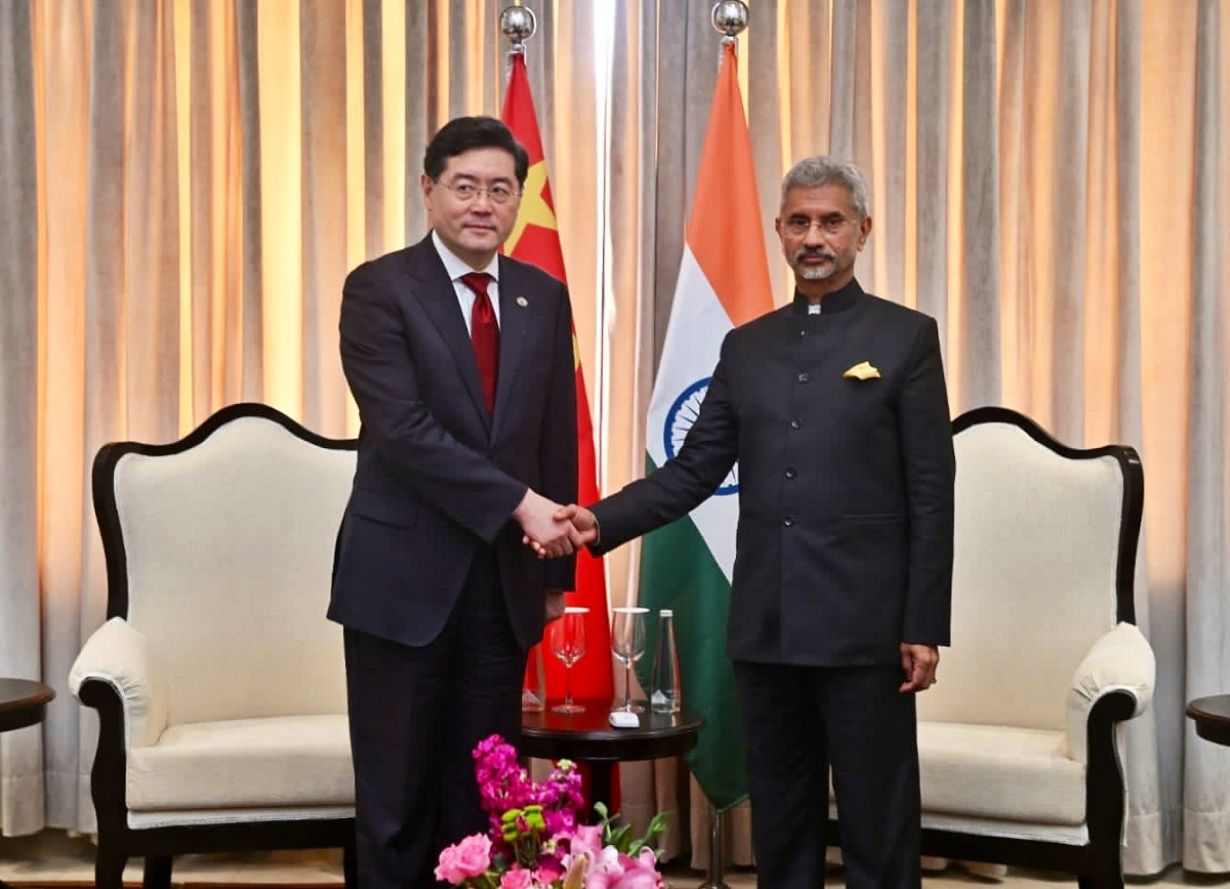Ever since China’s incursion into Indian territories in the 1962 conflict, relations between the two neighbors have not been as cordial as they should have been.
The two Asian nuclear giants are playing a seek-and-hide game. China’s land-grab craving has landed her into controversies and wranglings with some of her neighbors, including India. She wants to aggressively spread her ‘big boss’ syndrome through money and muscle power.
Currently, India is presiding over G-20. Under its aegis, India has to be the destination for various meetings in which top representatives of member countries are invited to participate.
China’s new foreign minister, Qin Gang, met with his Indian counterpart on the sidelines of the Delhi meeting. This is his first official visit to India as foreign minister.
This meeting follows the discussion of proposals for disengagement at remaining flashpoints in eastern Ladakh between India and China during the first physical meeting since 2019 of the Working Mechanisation for Consultation and Coordination (WMCC) on India-China border Affairs.
In his bilateral with the new Chinese Foreign Minister Qin Gang on the sidelines of the G20 FMM (foreign ministers meeting) on Thursday in New Delhi, External Affairs Minister S Jaishankar brought attention to the “abnormal” state of affairs in eastern Ladakh amid the continued military tensions along the Line of Actual Control (LAC).
The meeting focused mainly on the tensions along the India-China border, though it did not result in a decisive outcome in terms of resolution or the way ahead. The next round of Corps Commander-level talks between the two nations is expected to take place later this month.
Observers think the visit of the Chinese foreign minister could be taken as a test for Beijing’s balancing act between the US-led West and Russia during the protracted Ukraine war.
Sergey Lavrov, the Russian foreign minister, and Antony Blinken, the US Secretary of State, senior diplomats from 30 countries were present. On the eve of the meeting, Chinese foreign ministry spokeswoman Mao Ning urged the multilateral gathering to focus on global economic recovery and international economic cooperation.
“China stands ready to work with all parties to ensure that the G-20 foreign ministers meeting will send a positive signal on multilateralism, food and energy security, and development cooperation,” she said in Beijing.
It will be recalled that two days ahead of the G-20 New Delhi event, a meeting of the Communist Party’s elite Central Committee was held in Beijing in which China’s new diplomatic head also participated. At the end of that meeting, a grim picture of the country’s external challenges was painted.
Evidently, the new Chinese foreign minister, Qin Gang, carries the exasperating baggage of external challenges to the Delhi foreign ministers’ meeting. Among known exasperating issues is the US-China impasse.
Nevertheless, an official readout in this connection avoided mentioning whether he will have or not have one-to-one meetings with the Secretary of State, Antony Blinken. They walked together for ten minutes, during which Blinken repeated that Russia should withdraw from Ukraine without delay, and Lavrov stated that FMM.

Wang Dehua, the head of the Institute for South and Central Asian Studies at the Shanghai Municipal Centre for International Studies, thinks that “Qin’s visit to New Delhi could help ease bilateral tensions over the prolonged border stand-off between China and India.”
He added, “It is an important move for bilateral ties, and although it is impossible to see a breakthrough in their border disputes any time soon, it will at least help repair their damaged ties and stabilize the situation near the disputed areas.”
Admittedly, the frozen acrimony over a long period with intermittent flare-ups cannot be resolved in a meeting or two between the top leaders on both sides. Time, approach, intent, and conducive circumstances are the prerequisites for a meltdown.
The will to resolve the core of the dispute and an overwhelming desire of living in peace and mutual respect as good and friendly neighbors would be heart-warming signals.
The story of the Sino-Indian border dispute and its corollaries is a sordid and unfortunate one. Last week Chinese and Indian officials met in Beijing to talk about their military stand-off. T
hose talks had begun after the clash on their (WMCC) on China-India Border Affairs. The Chinese side was led by Hong Liang, the chief of the foreign ministry’s boundary and oceanic affairs department. The Indian side was led by his counterpart Shilpak Ambule.
It is difficult to imagine that the tone and tenor of Beijing talks could be different from what we have seen about numerous talks over the past three years. Nevertheless, the two sides have been keeping the doors open for talks whenever convenient, which is a positive move on either side.
New Delhi has been insisting that the disengagement of border troops should come before the restoration of normalcy in bilateral ties.
Thirty-one months that have elapsed since the last talks were held is a long time and has only helped to sort of a freeze in ties. In March last year, Wang Yi, the then-Chinese foreign minister, made a surprise visit to New Delhi, but he failed to meet Prime Minister Modi.
However, Prime Minister Modi and President Xi Jinping had met at G-20 Summit in Bali last November and had just exchanged pleasantries. The last formal meeting between the two top leaders was held in May 2020.
Observers think that the protracted Ukrainian war is likely to bring more miseries not only to the two involved countries but also those who are directly or indirectly connected with the developing situation.
The war has brought economic pressure on many countries, and this has been exacerbated by the energy and food crisis. China stresses remedying these challenges instead of imposing sanctions and passing condemnation resolutions. Beijing speaks of multilateralism as against unilateralism.
This means the other opinions and perceptions emerging from the ground situation and global strategies should be placed in order. The US and its Western allies would better engage China in broad-based talks on the existing world order and the necessity of examining whether it would effectively face the challenges that history is throwing up.
In the same vein, China needs to think about the right and workable systems of giving her neighbors assurances of non-aggression and due respect for their sovereignty and territorial integrity.
Finally, the Pakistan factor in the Sino-Indian stand-off has lost its effectiveness substantially, if not fully.
Pakistan’s inability to provide physical security to the skilled Chinese manpower deployed in various China-sponsored development projects, particularly in Baluchistan coastal areas, has brought public pressure on Beijing to re-visit its Pakistan policy.
Ever-increasing disorder and anti-China tirades in two violence-stricken provinces of Baluchistan and KP, besides the relentless anti-Pak public demonstrations in Gilgit and Baltistan —- the areas where China’s footprints are threateningly visible —-, are deterrents to Chinese projects like CPEC and B&R Initiative.
China has withdrawn its Consulate in Islamabad, and a freeze will likely cause a severe dent in the “iron friendship.” Beijing will need to upgrade its understanding and policy for the South Asian region.
- KN Pandita (Padma Shri) is the former Director of the Center of Central Asian Studies at Kashmir University. Views expressed here are of the author’s.
- Mail EurAsian Times at etdesk(at)eurasiantimes.com
- Follow EurAsian Times on Google News




